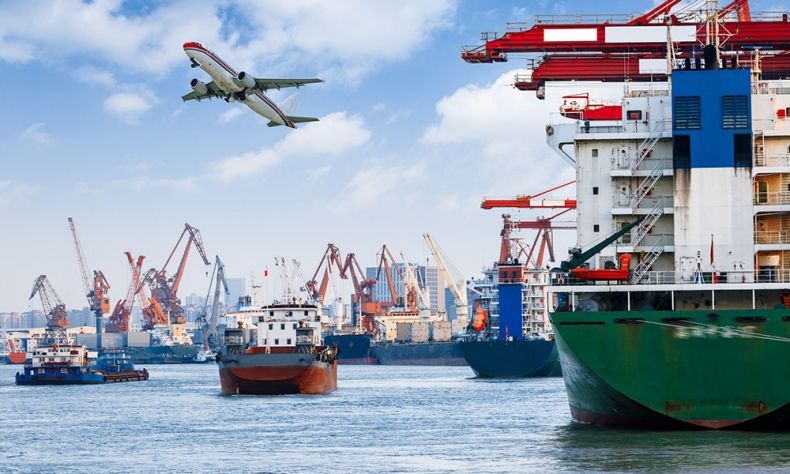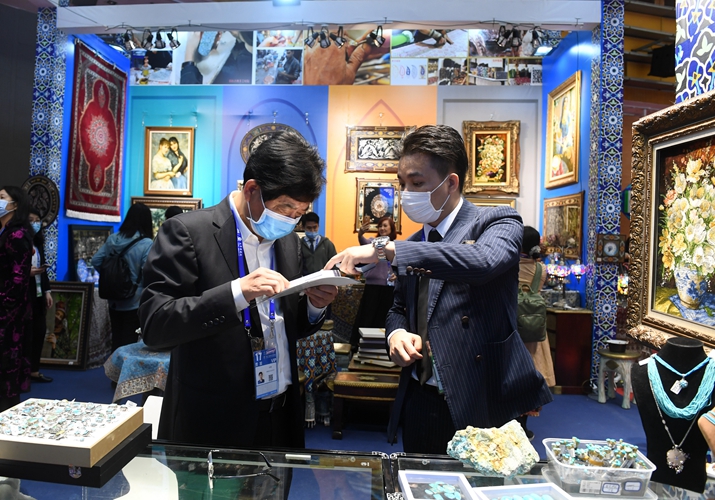Belt and Road Initiative Will Play a Bigger Role in the Post-Pandemic Era

The initiative, which sets aside ideological differences, is a platform for economic cooperation. And the absence of ideological competition has contributed to the common development of all participants.
The novel coronavirus disease (COVID-19) pandemic has dealt a devastating blow to the world order but it also reminds nations to explore new ways of survival and development. E-commerce as well as the broader digital economy have progressed rapidly. Greener forms of economic growth and lifestyles have been recognized and promoted. Regional economic integration has accelerated. These profound changes encourage China and other participating countries to expand cooperation under the framework of the Belt and Road Initiative.
On December 18, 2020, Chinese State Councilor and Foreign Minister Wang Yi delivered a speech at the Meeting of the Advisory Council of the Belt and Road Forum for International Cooperation via video link. He said, “No matter how the situation may evolve, the international community’s need for the Belt and Road remains unchanged; partners’ support for the Belt and Road remains unchanged; and China’s resolve to advance Belt and Road international cooperation remains unchanged.”
New trends
The World Trade Organization (WTO) originally predicted in early April 2020 that COVID-19 would likely cause the global trade to plummet by between 12.9 percent and 31.9 percent in the year. But it revised down its forecast last October, predicting that the volume would fall by 9.2 percent. E-commerce has played a positive role in promoting cross-border trade during the pandemic. Actually, China had developed cross-border e-commerce trade with all other Belt and Road participants by the end of 2019.
Innovations in digital technologies are significant in over-coming disruptions caused by COVID-19. Online shopping, online learning, telecommuting and online medical services helped social life remain functional in lockdowns. Smart manufacturing, agriculture, tourism and finance have also improved to meet new demand during the pandemic. These developments present great opportunities for advancing the digital Belt and Road program, providing new economic drivers for the participants.
The pandemic has also made the world more aware of green living and green development. China has, together with other Belt and Road participating countries, put forward the principles for green investment, established a green development coalition, and set up a green investment fund. Green development will become an overriding priority for future Belt and Road cooperation.
It is essential for Belt and Road participating countries to work together in implementing the UN 2030 Agenda for Sustainable Development, materializing its goals one by one in strict accordance with related requirements.
China has announced that it will strive to reach a peak in carbon dioxide emissions before 2030 and achieve carbon neutrality before 2060. When addressing the UN’s Climate Ambition Summit via video link on December 12, 2020, Chinese President Xi Jinping said by 2030, China will have lowered its carbon dioxide emissions per 10,000 yuan ($1,540) of GDP by over 65 percent, based on 2005 levels. He also said the share of non-fossil fuels in China’s primary energy consumption would increase to about 25 percent and the country would further expand its forest stock volume and installed capacity of wind and solar power.
As China is well aware, achieving these goals will be a daunting task. However, it is determined to contribute to the achievement of global sustainable development with practical actions.

Regional coordination
COVID-19 has severely impeded the flow of personnel, goods and capital across boundaries. Some countries are working in partnership to mitigate the shock of the pandemic by building closer regional economic cooperation. This will bring about a better environment for the Belt and Road Initiative, providing another boost for the economic development of participating countries and their common progress.
On November 15, 2020, 10 members of the Association of Southeast Asian Nations, as well as China, Japan, the Republic of Korea, Australia and New Zealand signed the Regional Comprehensive Economic Partnership (RCEP) free trade pact, marking a new stride toward regional economic integration among Asia-Pacific countries.
In addition, the African Union became the first regional organization to sign a Belt and Road cooperation document with China in December 2020. The plan defines the scope and content of key cooperation projects in fields including policy coordination, facilities and connectivity, facilitating unfettered trade and smoothening access to funds, as well as establishes their timeframes and roadmaps.
China has also announced that it will consider joining the Comprehensive and Progressive Agreement for Trans-Pacific Partnership, another free trade agreement with 11 members, some of which are also RCEP members.
Due to the mishandling of COVID-19, the United States and other Western countries’ ability to invest abroad is weakened. On the other hand, production activities returned to normal after only short halt in China thanks to extensive, stringent and thorough epidemic control measures. China’s powerful manufacturing and supply capacity has provided impetus and a guarantee for stable and long-term Belt and Road cooperation in the post-pandemic era.
In the first three quarters of 2020, non-financial outbound direct investment by Chinese companies in other Belt and Road participants reached $13.02 billion, up 29.7 percent year on year. During the same period, the volume of trade in goods between China and these countries was 6.75 trillion yuan ($1.01 trillion). This constituted a year-on-year growth of 1.5 percent, which was 0.8 percentage point higher than the overall growth of China’s foreign trade. Given the seriously disrupted global supply chains, the uptrend is of great significance for stabilizing overall economic growth and ensuring the people’s livelihood.
In the year, Belt and Road participating countries also convened video conferences to coordinate policies and advance practical cooperation on finance, taxation, energy, green development, anti-corruption and other issues.
The basic principles of the Belt and Road Initiative have proven themselves during the fight against the pandemic. They are openness, inclusiveness and transparency, as well as extensive consultation, joint contribution and shared benefits.
The initiative, which sets aside ideological differences, is a platform for economic cooperation. And the absence of ideological competition has contributed to the common development of all participants.
The author is professor of economics and director of the Belt and Road Research Institute at Beijing Normal University.
 Facebook
Facebook
 Twitter
Twitter
 Linkedin
Linkedin
 Google +
Google +










